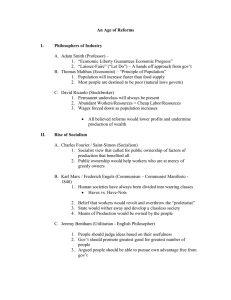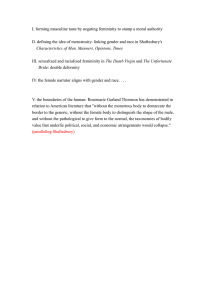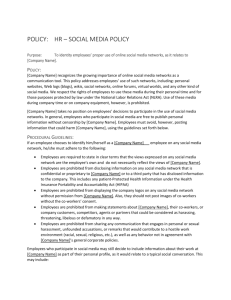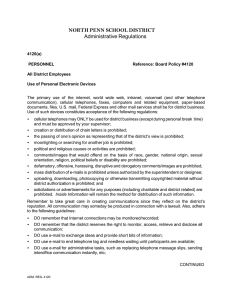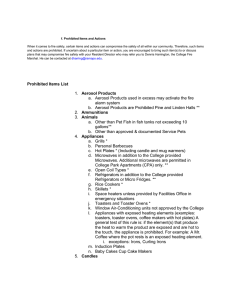Glossary: The First Factory Acts
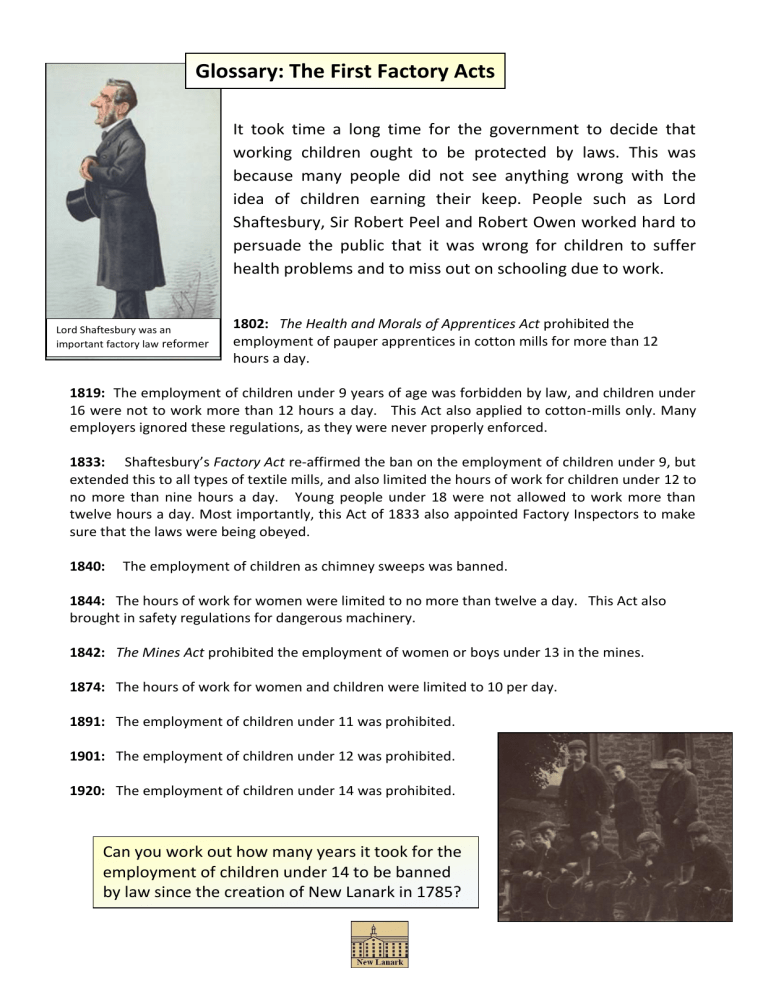
Glossary: The First Factory Acts
It took time a long time for the government to decide that working children ought to be protected by laws. This was because many people did not see anything wrong with the idea of children earning their keep. People such as Lord
Shaftesbury, Sir Robert Peel and Robert Owen worked hard to persuade the public that it was wrong for children to suffer health problems and to miss out on schooling due to work.
Lord Shaftesbury was an important factory law reformer
1802: The Health and Morals of Apprentices Act prohibited the employment of pauper apprentices in cotton mills for more than 12 hours a day.
1819: The employment of children under 9 years of age was forbidden by law, and children under
16 were not to work more than 12 hours a day. This Act also applied to cotton-mills only. Many employers ignored these regulations, as they were never properly enforced.
1833: Shaftesbury’s Factory Act re-affirmed the ban on the employment of children under 9, but extended this to all types of textile mills, and also limited the hours of work for children under 12 to no more than nine hours a day. Young people under 18 were not allowed to work more than twelve hours a day. Most importantly, this Act of 1833 also appointed Factory Inspectors to make sure that the laws were being obeyed.
1840: The employment of children as chimney sweeps was banned.
1844: The hours of work for women were limited to no more than twelve a day. This Act also brought in safety regulations for dangerous machinery.
1842: The Mines Act prohibited the employment of women or boys under 13 in the mines.
1874: The hours of work for women and children were limited to 10 per day.
1891: The employment of children under 11 was prohibited.
1901: The employment of children under 12 was prohibited.
1920: The employment of children under 14 was prohibited.
Can you work out how many years it took for the employment of children under 14 to be banned by law since the creation of New Lanark in 1785?
